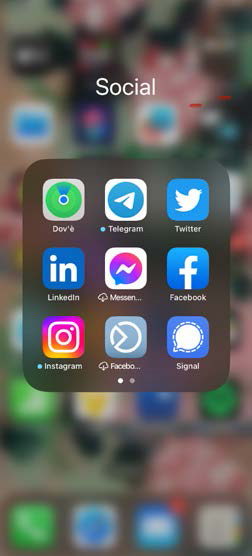Block the hate
Publish date 06-10-2023

As social media has become entrenched in everyday habits and behaviors, there has also been an increase (or greater visibility) of hate-based groups.
Very often such groups take the form of real terrorist and criminal organizations, which seek to use online platforms to better spread their ideology, recruit new members and coordinate the behavior of existing members. These organizations seek to leverage social networks or other online channels due to the ability of these platforms to disseminate information quickly and widely. To stem this phenomenon, the major social media try to limit the online operations of these organizations, often by removing members or adopting deplatforming, i.e. preventing those with unacceptable or offensive opinions from contributing to a forum or debate, for example by blocking them on the platform.
To what extent do these interventions succeed in solving the problem?
A recent study published in the prestigious scientific journal PNAS tries to answer this question. The authors use an econometric technique known as differences-in-differences, based on the comparison of the results of an intervention before and after it, and between those who were affected by the intervention ("treated" ) and who doesn't. The technique used by the authors in particular exploits the staggered times of six deplatforming events (the intervention whose effectiveness we want to evaluate) both at organizational and user level.
The authors focus on the effects of “strategic network disruptions,” a type of deplatforming in which core members of a hate-based organization are removed from the platform at the same time, eliminating the organization's online leadership. The goal of this approach is to disrupt organizational activities by simultaneously removing key members of an organization from the platform, in order to disarticulate their leadership and hinder their ability to regroup and spread harmful content. If this approach were to be effective, the organization's target audience online should be exposed to less radicalization and hate content, and thus reduce their production.
The results are positive. Strategic network disruptions appear to contribute to the creation of a healthier platform, where members of hate-based organizations' target audiences reduce their consumption and production of hateful content and interact less with other audience members. However, these are aggregate results, masking substantial heterogeneity between members of the public who interacted most before the intervention and those least engaged.
While the latter reduce their engagement with hateful content and with other members of the public following the removal of leadership, those who are more active react in the opposite way to what one would expect from such a measure. That is, they increase the consumption and production of hateful content and interact more with other members of the public. This adverse reaction is, however, short-lived. Within two months of the deplatforming intervention, even those closest to the organization reduce their engagement with the hateful content and with the rest of the network.
Overall, the results of this are quite encouraging: strategic disruptions of networks improve the quality of content created and consumed by that part of users who are most at risk of being influenced or “picked up”, i.e. those who are least close to the organization. If the disruptions appear to encourage – rather than calm – some of the public in the short term, this outcome appears to be reversing in the long term.
Disturbing the leadership of a hate-based organization can therefore weaken it, making it less capable of disseminating negative content and strengthening itself.
Another important aspect for the scope of the results is the potential connection between online and reality. Inhibiting the circulation of hate online can also influence offline behavior. In fact, perpetrators of hate crimes recognize the influence of online groups on their behavior and the use of social media is associated with a greater incidence of offline hate crimes.
Pierluigi Conzo
NP August / September







